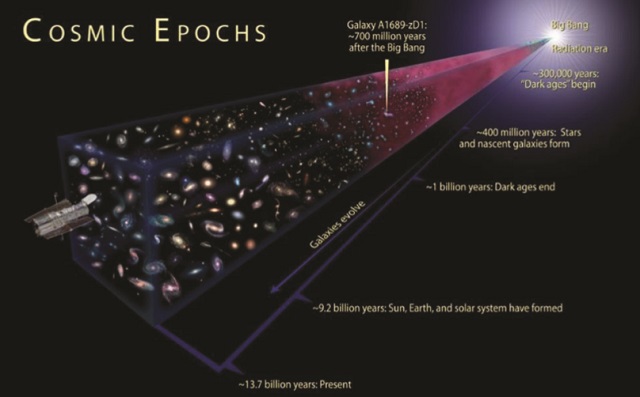
This very final point — this singularity that represents where the laws of physics break down — also is understood to represent the origin of space and time. This was the ultimate idea of the Big Bang.
Of course, everything except that last point has been confirmed to be true! We’ve created quark-gluon plasmas in the lab; we’ve created matter-antimatter pairs; we’ve done the calculations for which light elements should form and in what abundances during the early stages of the Universe, made the measurements, and found that they match with the Big Bang’s predictions. Coming forward even farther, we’ve measured the fluctuations in the cosmic microwave background and seen how gravitationally bound structures like stars and galaxies form and grow. Everywhere we look, we find a tremendous agreement between theory and observation. The Big Bang looks like a winner.
Except, that is, in a few regards. Three specific things you would expect from the Big Bang didn’t happen. In particular:
- The Universe doesn’t have different temperatures in different directions, even though an area billions of light-years away in one direction never had time (since the Big Bang) to interact with or exchange information with an area billions of light-years in the opposite direction.
- The Universe doesn’t have a measurable spatial curvature that’s different from zero, even though a Universe that’s perfectly spatially flat requires a perfect balance between the initial expansion and the matter-and-radiation density.
- The Universe doesn’t have any leftover ultra-high-energy relics from the earliest times, even though the temperatures that would create these relics should have existed if the Universe were arbitrarily hot.
Theorists thinking about these problems started thinking of alternatives to a “singularity” to the Big Bang, and rather of what could recreate that hot, dense, expanding, cooling state while avoiding these problems. In December of 1979, Alan Guth hit upon a solution.
Instead of an arbitrarily hot, dense state, the Universe could have begun from a state where there was no matter, no radiation, no antimatter, no neutrinos, and no particles at all. All the energy present in the Universe would rather be bound up in the fabric of space itself: a form of vacuum energy, which causes the Universe to expand at an exponential rate. In this cosmic state, quantum fluctuations would still exist, and so as space expanded, these fluctuations would get stretched across the Universe, creating regions with slightly-more or slightly-less than average energy densities. And finally, when this phase of the Universe — this period of inflation — came to an end, that energy would get converted into matter-and-radiation, creating the hot, dense state synonymous with the Big Bang.
This was regarded as a compelling-but-speculative idea, but there was a way to test it. If we were able to measure the fluctuations in the Big Bang’s leftover glow, and they exhibited a particular pattern consistent with inflation’s predictions, that would be a “smoking gun” for inflation. Furthermore, those fluctuations would have to be very small in magnitude: small enough that the Universe could never have reached the temperatures necessary to create high-energy relics, and much smaller than the temperatures and densities where space and time would appear to emerge from a singularity. In the 1990s, 2000s, and then again in the 2010s, we measured those fluctuations in detail, and found exactly that.
The conclusion was inescapable: the hot Big Bang definitely happened, but doesn’t extend to go all the way back to an arbitrarily hot and dense state. Instead, the very early Universe underwent a period of time where all of the energy that would go into the matter and radiation present today was instead bound up in the fabric of space itself. That period, known as cosmic inflation, came to an end and gave rise to the hot Big Bang, but never created an arbitrarily hot, dense state, nor did it create a singularity. What happened prior to inflation — or whether inflation was eternal to the past — is still an open question, but one thing is for certain: the Big Bang is not the beginning of the Universe!
****
Astrophysicist and author Ethan Siegel is the founder and primary writer of `Starts With A Bang!’ He wrote books like; Treknology and Beyond The Galaxy.
 The Independent Uganda: You get the Truth we Pay the Price
The Independent Uganda: You get the Truth we Pay the Price


